This article was originally posted by the NFB on the Braille Monitor. This note is from the Editor: In our movement, we raise expectations because low expectations create barriers, including discrimination. This is most pernicious when it occurs in areas like employment and education, but it can be disappointing and even hurtful when it touches our leisure activities as well. I have seen or personally experienced blind people being denied the opportunity to ice skate, play a game of paintball, and even to go on a simple walking tour of an historic city. On the other hand, I have been welcomed without hesitation to an indoor sky-diving facility, a sea life park where I swam with dolphins, and the copilot seat of a small plane. Overwhelmingly, the issue isn’t what we as blind people can and cannot do, but the expectations of others and their willingness, or lack thereof, to accommodate and learn. A story like the one you are about to read shouldn’t be unusual, but sadly it still needs to be told in hopes that matters will continue to improve. In this article, Christine Faltz Grassman, president of the Fairfax Chapter of the National Federation of the Blind of Virginia, tells how she and others were included in firearms training, which is often considered an activity in which blind people should not or cannot engage. Whether or not you have a desire to fire, carry, or learn how to use a gun, the story is encouraging. Here is what Christine and some other blind people experienced:
In a world where blind people are too often underestimated and excluded—especially from environments perceived as high-risk—finding instructors who welcome us with confidence, respect, and professionalism is a rare and powerful experience. One such group is Trouble Defense LLC, a veteran-owned firearms and self-defense training company based in Northern Virginia. Founded by Army veteran Dee Parker and Sheena Parker, Trouble Defense is known for its rigorous safety standards, diverse class offerings, and commitment to individual empowerment.
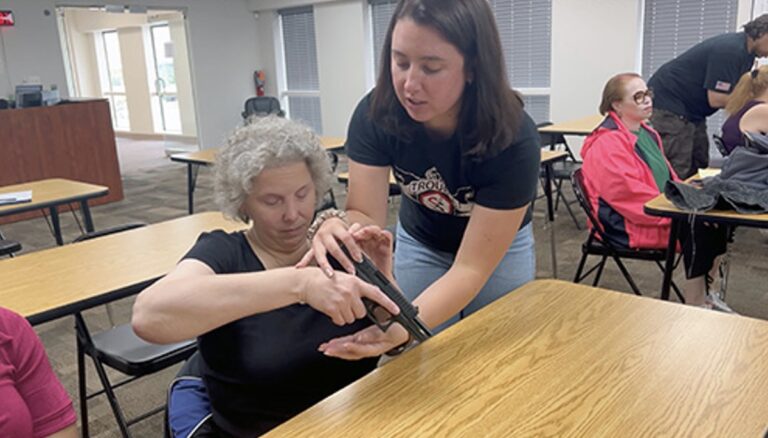
From home-defense seminars and gun maintenance classes to practical concealed carry instruction and situational awareness training, Trouble Defense has served a wide array of students across the region. What distinguishes them most is not just the quality of their curriculum, but their openness to growth and inclusion.
In April 2025, I contacted Trouble Defense with a request that might have prompted hesitation elsewhere. I asked whether they would be willing to offer a firearms safety class to a group of blind and low-vision individuals. I fully expected to encounter delay, concern, or doubt. Instead, I received an immediate and enthusiastic response from co-founder Sheena Parker: “It would be our honor to train you.”
That simple statement marked the beginning of an extraordinary experience—one grounded in mutual respect, high expectations, and a shared belief in capability.
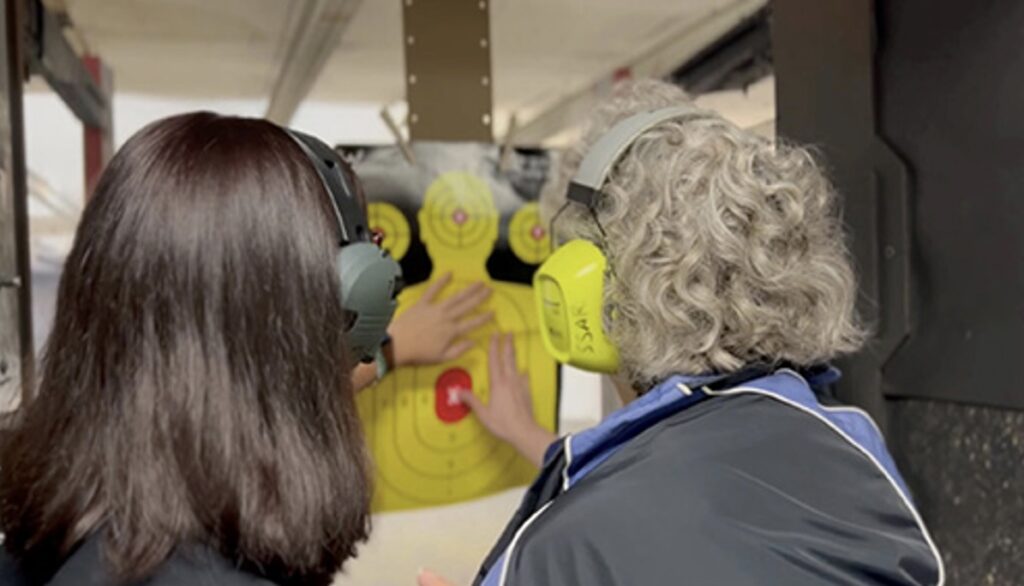
On Sunday, May 18, 2025, ten individuals—nine of us blind or low-vision—gathered at Trouble Defense LLC for a comprehensive firearms safety class and live range experience. We left not only more informed and confident, but fully respected and empowered. Sheena Parker, along with instructors Haley and Lacy, led the course with clarity and purpose. They taught us the same way they would teach any students, adjusting for accessibility and safety without diluting standards. There was no condescension, no spectacle—just professional, responsive instruction.
As the training date approached, I visited Trouble Defense’s website and discovered that “Adaptive Firearms Training for the Blind and Vision Impaired” had already been added to their listed services. This was not a reluctant accommodation—it was a wholehearted commitment. When informed that the site’s reciprocity maps for carry permits were color-coded and therefore inaccessible, Sheena quickly provided an accessible, text-based alternative.
Our class began with an overview of the four universal rules of firearms safety:
We also discussed the legal frameworks governing firearm possession and carry, which vary by jurisdiction. Virginia, for example, allows open carry without a permit, but requires a permit for concealed carry. Participants from other states learned that they might need additional training or licensing, depending on local law.
Next, we were introduced to a bright orange inert training pistol, allowing us to explore its components in a safe and controlled setting. We then practiced handling unloaded semi-automatic handguns, learning how to rack the slide and identify parts such as the grip, slide, and magazine release. For some, it was a chance to build on past experience. For others, it was a first encounter with a tool they had long been told was off limits.
The class then split into two groups. One remained in the classroom for further instruction, while the other made the short walk to Sharpshooters Indoor Range. After checking in and receiving eye and ear protection, we entered the range and met the safety officer, who explained that he would monitor our session and provide support if needed.
Inside, camp chairs were set up along the wall for those waiting their turn. The range was clean and well-ventilated, and the instructors guided each of us to the firing line.
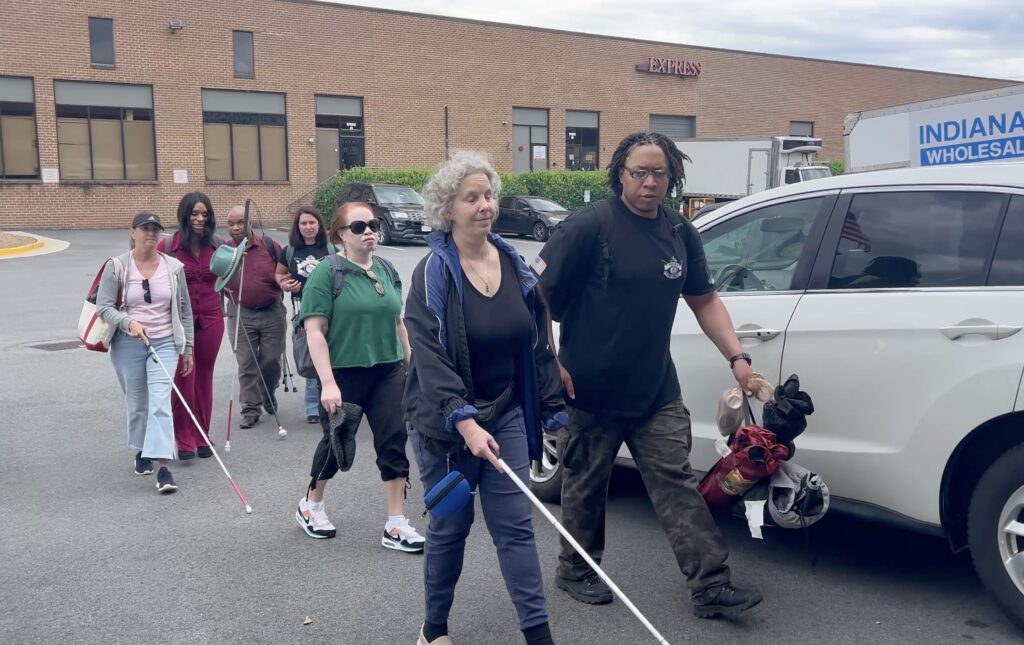
Each pair, student and instructor, stood side by side in booths. These had an opening at the rear but were enclosed on right and left, and towards the front there was a carpeted “bench” at approximately abdominal height where our handguns were placed, loaded, and unloaded. Amid the sounds of various types of gunfire, and an occasional announcement telling a particular lane that they had ten minutes remaining in their session, we were shown how to check if a gun was loaded, what a magazine felt like when it was empty and when it was not, how to stand, and how to grip. We were also told that the target would be at eye level. We were shown the targets and shown where we should strive to hit and how the target was rigged.
I was fascinated that a touchscreen was used to manipulate the targets.
We each had the opportunity to shoot .22 caliber and 9mm handguns. At the conclusion of our individual turns in the booths, the instructors helped us examine the targets to feel where our shots landed. Many of us were surprised by our accuracy—and deeply proud. One participant marked her sixtieth birthday with a bullseye.
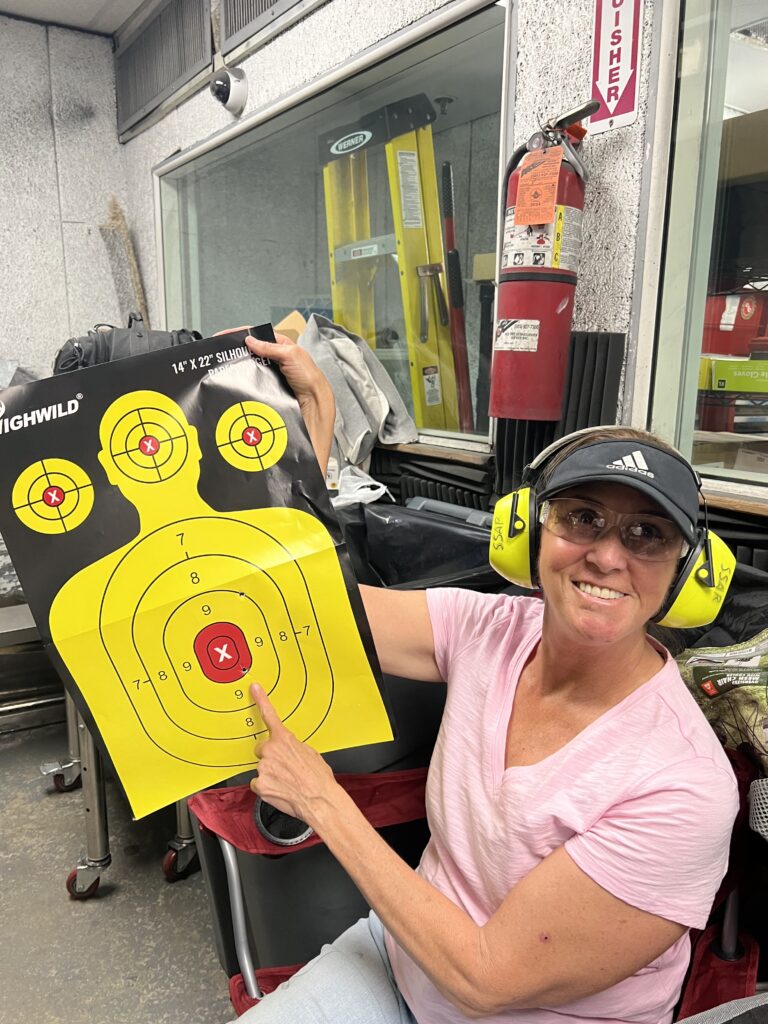
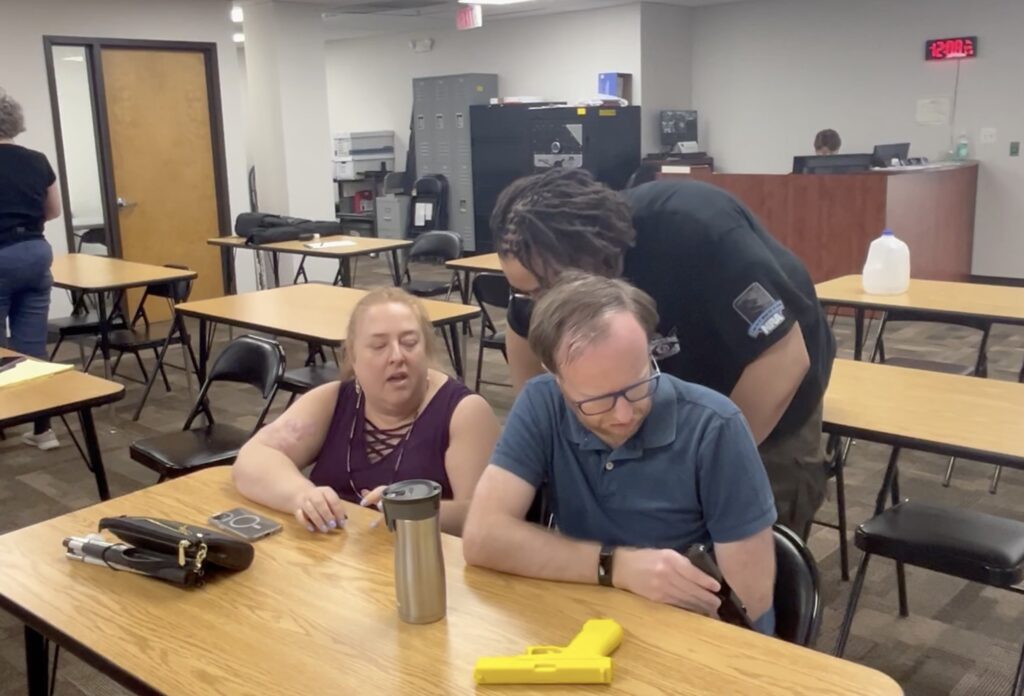
The instructors made us feel really welcome and like we fit in. They tailored their presentation to us and gave us each individual attention as we familiarized ourselves with the firearms. And when it came to the actual shooting experience, they adapted to our needs: helping us find the stance that worked best for us, giving us the opportunity to try shooting with two calibers of guns, and letting us feel where we struck the target at the end. Trouble Defense did a great job of meeting each of us where we were, enabling us to feel safe with firearms, and providing a really enriching new life experience. —-Lia Jacobsen
I grew up in rural North Carolina, and guns were everywhere. My uncle had a shotgun in his bedroom. All the kids had BB guns. But it was not even considered for a moment that I should put my hands on even a BB gun. I considered becoming a probation officer and had a friend tell me that I could never be one because I could not shoot a gun. This was repeated a lot, and it was something that was on my mind. I did not become a probation officer for other reasons, but certainly that stayed with me. When I first actually put my hands on the unloaded gun in the class, I suddenly became aware of what I was holding, that this could cause death.
It became a very serious awareness, and when I first entered the range, I was not even going to shoot. I put my big girl tennis shoes on, and I did it. I was a little taken aback with the 9mm, but I did it. I talked with my adult daughters about the experience, and they said they would be interested in going back and doing a class with me.
—-Shannon Kalu, board member of the Greater Alexandria Chapter
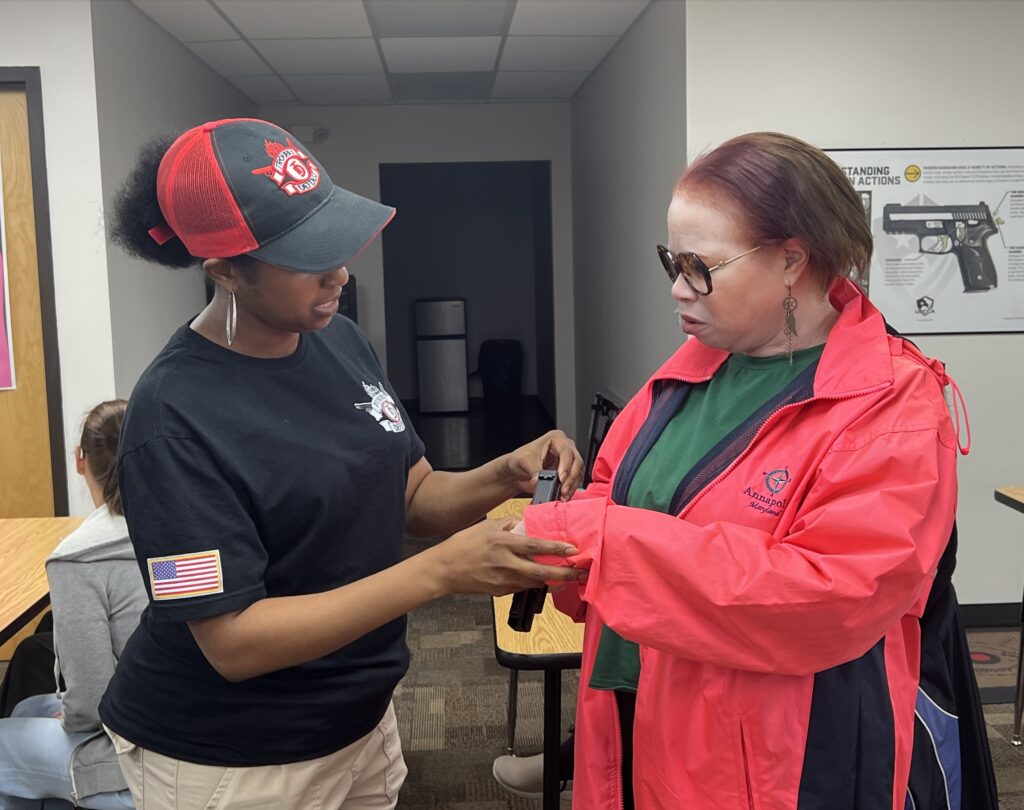
The class was also attended by Todd Tolson, Executive Director of the Blind Muse Foundation, a nonprofit dedicated to fostering communication, education, and connection between blind and sighted individuals. Todd documented parts of the experience through photos and video, and we look forward to sharing accessible, described media as it becomes available.
Sheena and Dee Parker attended the Fairfax Chapter meeting, where they spoke candidly about the resistance they have faced in the firearms training industry. Other instructors had advised them not to work with blind students—or to limit the experience to using “dummy” guns. Trouble Defense made a different choice. They embraced the opportunity to teach, to learn, and to move beyond fear and low expectations.
Since the class, the Parkers and their team have continued to engage with us—soliciting feedback, refining their offerings, and asking about language, media, and representation. Several of us plan to return for additional range time, further instruction, or self-defense training.
At Trouble Defense, we were treated not as risks, but as capable adults. That is what made the experience extraordinary. It was not that we held and fired real handguns, but that we did so in an environment of trust, dignity, and high expectations. Equitable treatment should not require applause. Yet in a world where it is still far too rare, I believe in acknowledging it when it is done right.
To learn more about this training opportunity, visit: www.troubledefense.com/blind-and-low-vision-firearms-training.
To support inclusive creative media, events, and experiences, visit www.blindmuse.org.